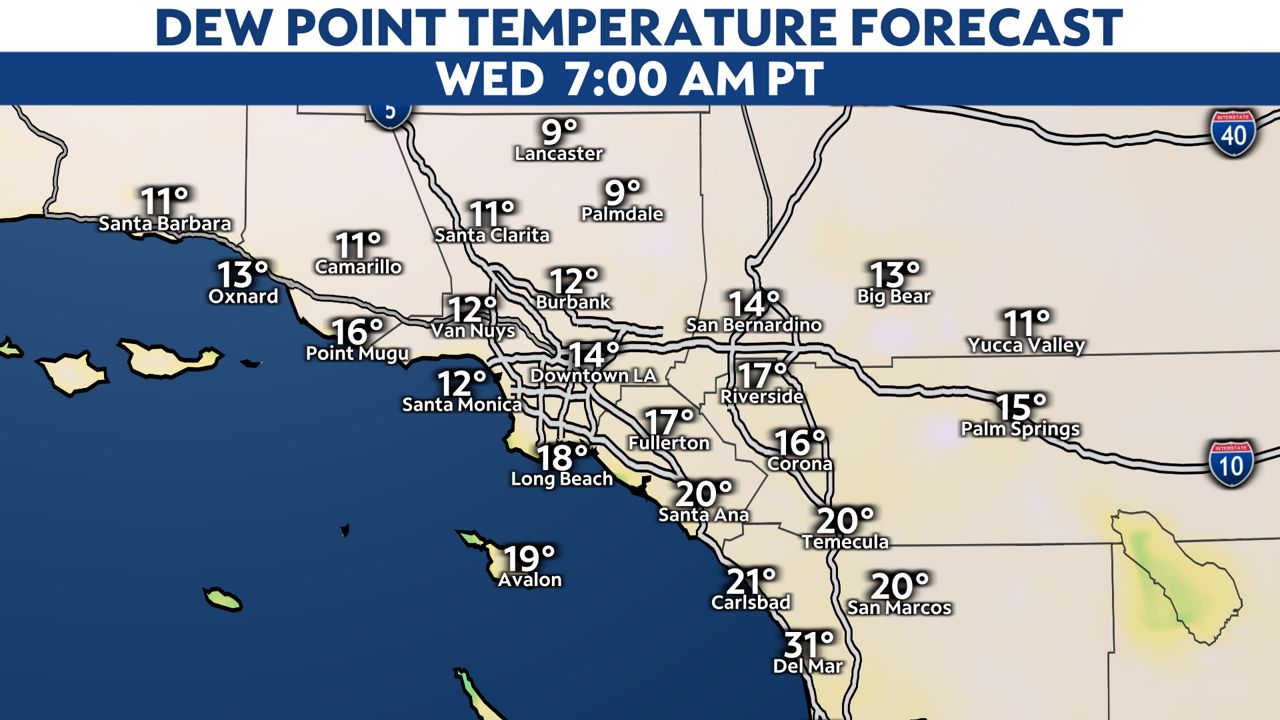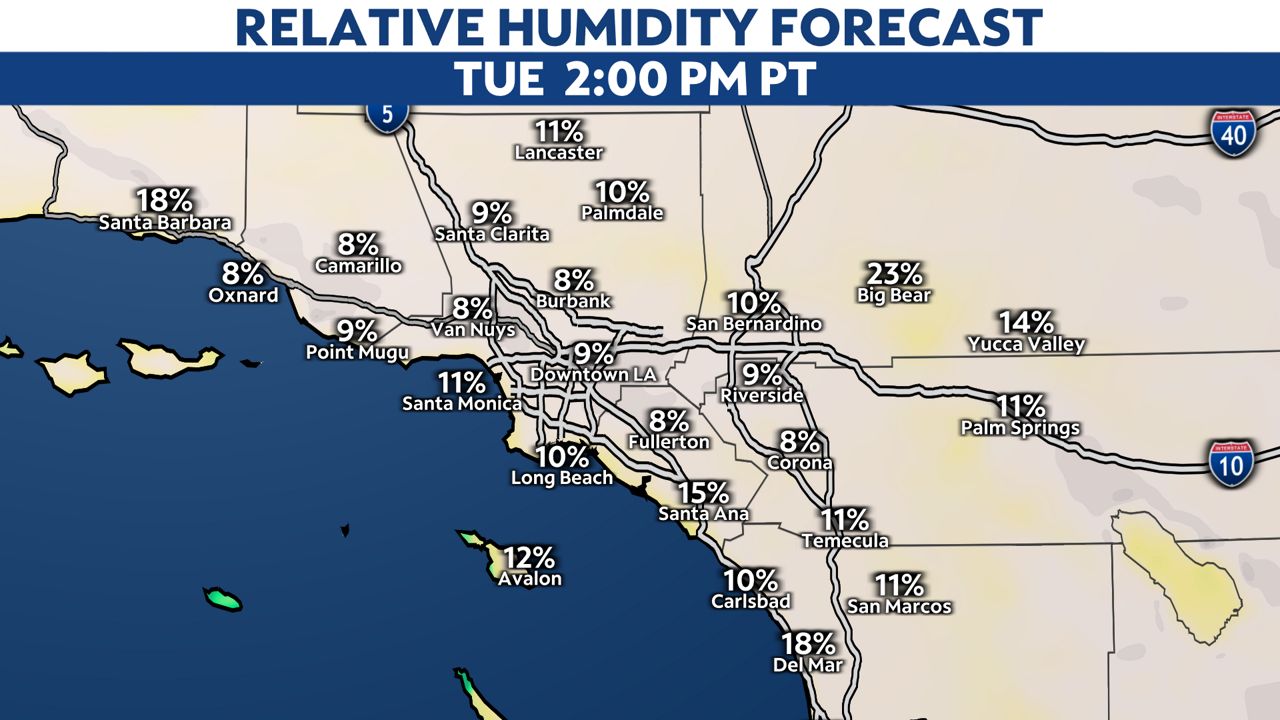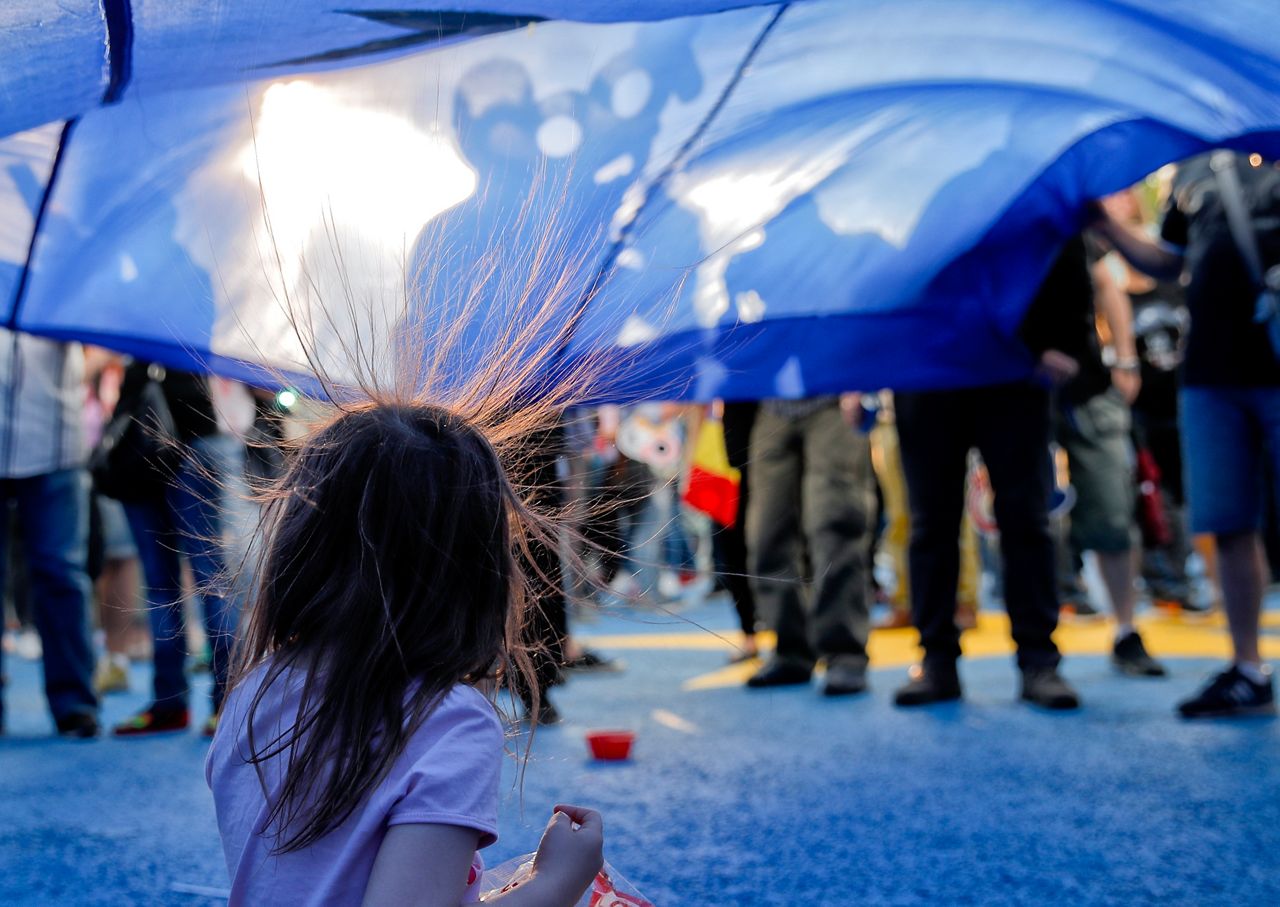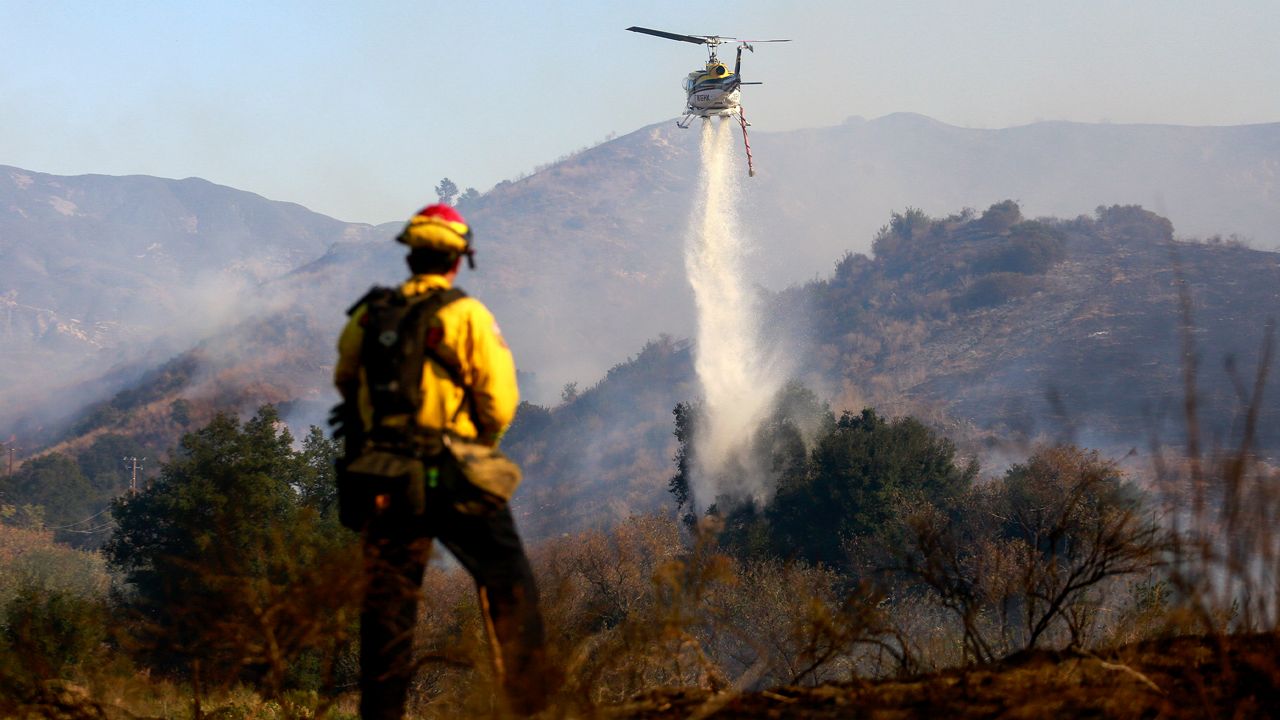It’s been impossible to escape how dry it’s been in Southern California — from fire danger to cold mornings to static electricity, the parched air at the surface impacts all of us.
The level of water vapor in the air is measured as the dew point, the temperature at which air would have to cool for water vapor to condense into liquid form. Once the air reaches the dew point temperature, it cannot hold any more water in the gas form — this means clouds, fog, and/or precipitation will occur when the temperature reaches its dew point.
The lower the dew point, the lower the amount of water in the air means the drier the air is.

Relative humidity measures the water vapor in the air relative to how much water the air can contain. It is expressed as a percentage.
It’s not as simple as dividing the dew point by the temperature — this will not calculate the relative humidity correctly!
Relative humidity is calculated as a function of pressure or density — choose one or the other. Divide actual vapor pressure by saturation vapor pressure, or actual vapor density by saturation vapor density, and multiply by 100.
Did I lose you? That’s okay. I haven’t actually calculated relative humidity since college, as there are other (easier) ways to find it online.
Very low relative humidity usually means there is very little moisture in the air. It is crucial you know the temperature and dew point to assess how “dry” the air really is.

The most dangerous effect of dry air is high fire danger, especially in desert areas with dry brush. By the way, Los Angeles is a desert!
Dry air in concert with dry brush lowers the ignition temperature — the temperature at which combustible materials ignite in fire — making it easier for fires to start.
Dry air is most pronounced in Southern California during periods of Santa Ana winds. The combination of dry air and gusty winds can be a recipe for disaster: Fires start more readily when it’s dry, and spread rapidly with the aid of gusty winds.
Dry air has less of an impact if fuels on the ground — brush, grasses, and trees — have some moisture. Recent precipitation or saturated soil will raise the ignition temperature, making these fuels resistant to new ignitions.
Two important factoids:
- Air temperature cannot realistically drop below the dew point.
- Temperatures fall more dramatically overnight in dry environments — i.e. when the dew point is much lower than the air temperature.
Have you noticed how cold it’s been around 7 a.m. every morning, when the day’s morning lows occur? Dew point temperatures have been really low — even near the coast — allowing our morning temperatures to fall below average, especially closer to the coast.
Dry air leads to static electricity build-up — which means a higher chance for electrostatic shocks, as well as hair static. Yes, even your hair can build up extra electrons when the air dries out, leading your hair strands to repel from each other!

You can help ease static hair and shocks indoors by using a humidifier to keep the relative humidity above 45 percent.
Dry air can be anything from uncomfortable to dangerous. Understanding why is half the battle — follow the weather forecast right here on Spectrum News to help keep yourself comfortable and safe.



